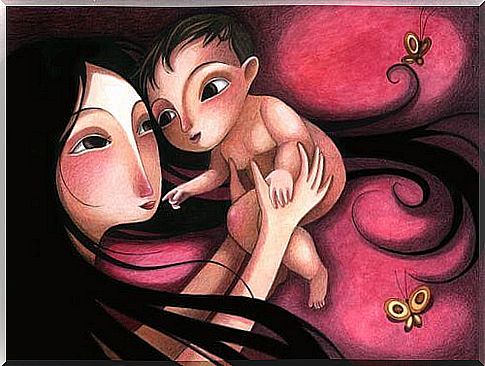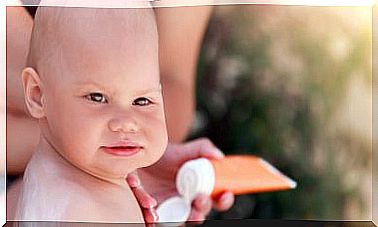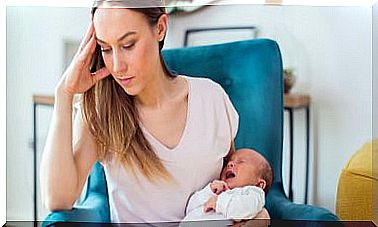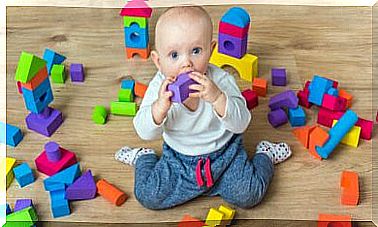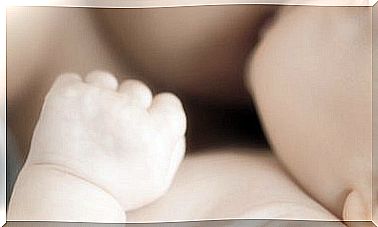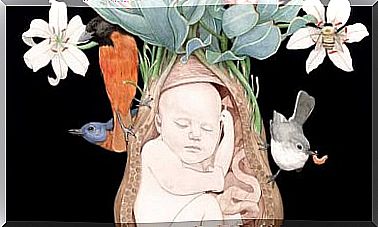The Baby’s Brain Matures From The Inside Out And The Key Is In LOVE

The most important period in the development of a child’s brain is the stage between 0 and 6 years. Not only because many chemical changes occur and new connections are activated, but because the brain begins to increase in size and establish associations.
Let us remember that in the human brain, throughout the first years of life is when the pillars for the development of emotional intelligence begin to settle .
The way we interact with the newborn and the parenting style are the main components for the development of the baby. Given both adequately and healthily, good emotional health can be promoted for the child. In other words, by giving him affection and helping him mature, little by little, we will guarantee the formation of a fit adult human being.
Managing human needs from early childhood is undoubtedly challenging. In fact, to achieve this, it is necessary to understand how the brain maturation of our children occurs.
Let’s see below some basics that will allow us to be the support that our little ones need.
How does the human brain mature?
The brain matures from the inside out and back to front
It seems strange but it is. The brain of a newborn, as we already know, is still very immature when it enters the world. Like a flower, it is about helping it to flourish so that it can gradually reach maturity and thus develop all the potential of which it is capable.
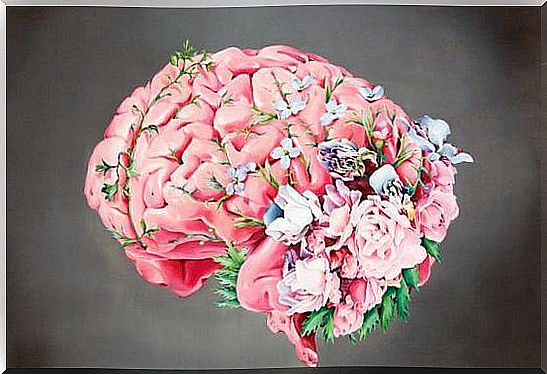
The human brain, in the postnatal stage, needs to finish establishing structures, establishing connections and shaping those brain areas where processes as basic as the entire information process will be governed and the following below:
- The communication.
- The movement.
- Coordination.
- Problem solving.
From conception to three years of age, a child’s brain undergoes an incredible amount of changes. The brain process that we know as synapses (that is, the connectivity between neurons) develops progressively. Something that will not be repeated after 3 years of life.
And for all this process to occur efficiently, it is necessary for the child to experience the maximum affective interactions with the people around him, with the whole environment.
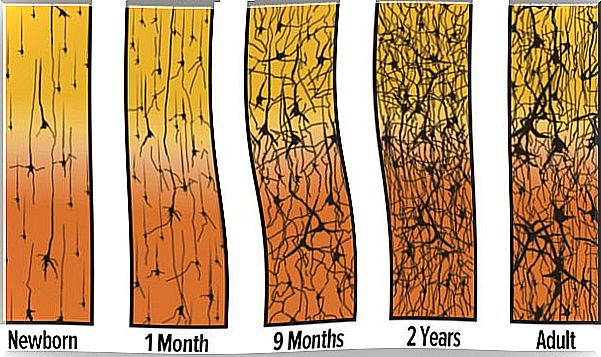
From the inside to the outside and from the back to the front
The human brain consists of several parts, including the one in which c they connect the spinal cord with the upper brain . Thanks to her, the human being c control the reflexes and involuntary processes such as breathing and heart rate. The newborn has only this structure in an immature state.
- Behind the brainstem and below the top of the brain is the cerebellum, involved in balance and coordination. A part that will settle slowly, but steadily.
- The baby will mature day by day until reaching those frontal areas established in the cortex or neocortex, involved in higher processes such as memory, learning, decision-making, problem solving, planning.
Now, it is inside the human brain that the real magic is found. It is there where he finds that exceptional compass that governs our emotional world. Structures such as the limbic system, the amygdala or the hippocampus are very primitive areas, which regulate EVERY baby’s behavior.
Stimulate the synapse
Our genes are what allow the brain to reorganize itself based on the experiences it receives from the environment. If these are positive, stimulating and affectionate, neural activity grows stronger against possible enemies better known as: stress and fear.
- On the other hand, repeated use and constant interaction with the environment are external channels that give internal strength, which generate synapses.
- For this reason, it is important to remember that to promote this positive connectivity it is necessary that we be constant and that our parenting style is always the same.
- It is useless, for example, to attend to the crying of the baby during the first 6 months of life and then to stop doing it because we think that it is time for him to “mature”, to grow up and understand that he must learn to be alone.
Until the age of 3 a child will not settle the sleep pattern, nor will many of those neurological processes have matured in him with which to feel completely safe at night. You need our closeness.

Key moments in a baby’s brain development
- 3-6 months: Myelin begins to appear in the axons of some neurons during the second trimester. This process – called myelination – continues until adolescence and will allow the child to process information faster.
- 6-9 months: the baby’s cerebral cortex is already beginning to develop and acquire potentiality: it will interact much more with us.
- First year : the cerebellum triples in size, the frontal and temporal lobes become predominant, and children begin to move with more confidence, already initiating a more intense interest in communication.
- The two years: the most intense changes occur in those brain areas related to language.
- Three years : it is the magic age in every child. The Synaptic density in the prefrontal cortex reaches its maximum splendor, in fact three times that of an adult. His only interest is to learn, socialize and discover the world at your fingertips.
If we guide him through love and respect, we will be ensuring that our baby can become an emotionally stronger child.
